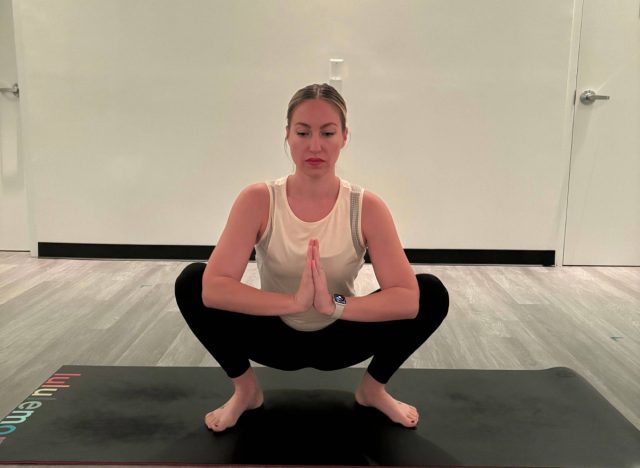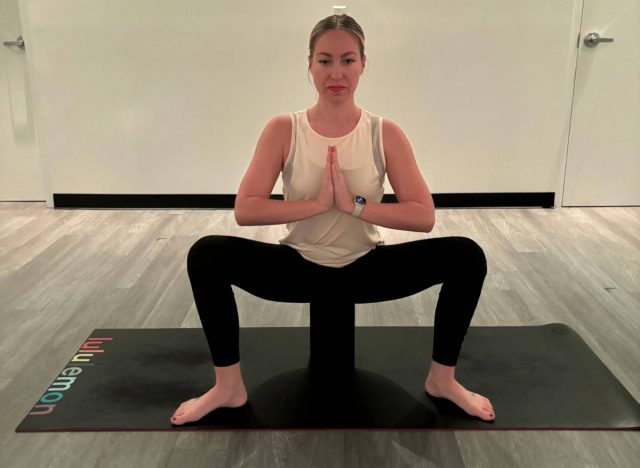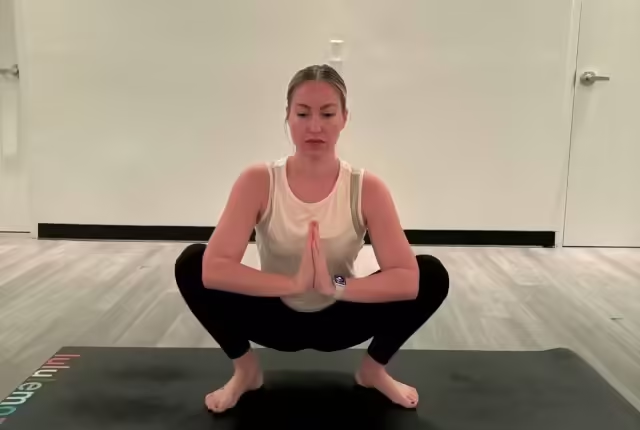It is crucial to maintain mobility as you get older to enjoy a high quality of life. Being physically active is key to keeping your bones, body, and mind healthy, allowing you to perform daily tasks independently. One effective exercise that many people recommend for enhancing mobility is the “yogi squat.” This exercise has gained popularity for its ability to improve flexibility and overall fitness. In this article, a fitness expert will discuss the benefits of yogi squats and how they can contribute to better mobility and overall well-being as you age.
How Do Yogi Squats Improve Flexibility and Mobility?


Yogi squats fire up multiple muscles and joints, helping to improve mobility and flexibility. The squatting position stretches out your inner thighs, hips, groins, back torso, and ankles while building strength in the legs, knees, feet, and lower back, explains Valerie Meyer, ERYT-500 and corporate trainer for YogaSix. Maintaining a tall posture in the pose also creates space in your spinal column and lumbar spine.
Incorporating yogi squats into your mobility workouts offers many benefits. For one, this exercise engages and strengthens major muscles in your lower body, such as the glutes, hamstrings, and quads.
“By strengthening the lower body and core muscles, yogi squats can help improve posture and balance,” Meyer tells us. “[The] yogi squat is a deep hip opener that allows practitioners to access and strengthen the pelvic floor muscles, releasing stiffness and tightness from the hips, legs, and lower back. Regular practice of this pose increases flexibility in the hip and knee joints, preparing the body for other yoga poses. The position of the hands helps strengthen the chest and shoulders, improving blood circulation and flexibility.”
How To Do It:
- Stand tall with your feet placed hip-distance apart and slightly turned out.
- Bend both knees and lower your glutes toward the floor as you descend into the yogi squat.
- Maintain an elongated spine and open your thighs wide so your torso moves between them.
- Bring your hands to your heart’s center.
Common Mistakes To Avoid When Performing Yogi Squats


When performing yogi squats, there are a few things to keep in mind.
“Some people might keep their hips above the knees and their weight too far forward (into the balls of their feet),” Meyer cautions. “This position does not allow their body to drop into the pose. If this is an issue, use a block or two to sit on.”
In addition, your heels may rise when you squat. To become better balanced, position a folded blanket below your heels for added support. “Otherwise, the pose will place more pressure forward rather than down,” Meyer adds.
Frequently Asked Questions (FAQs)
What are ‘Yogi Squats’?
‘Yogi Squats’ refer to a deep squat posture often used in yoga practices. This pose involves squatting down low with your feet flat on the ground and your heels touching or close to touching the floor. It is a common pose for improving mobility, flexibility, and strength.
How can ‘Yogi Squats’ boost mobility?
By regularly practicing ‘Yogi Squats’, individuals can improve their hip, ankle, and knee mobility. This posture helps in stretching and strengthening the muscles in the lower body, which can lead to increased flexibility and range of motion over time. It also helps in improving posture and balance.
Are there any tips for beginners trying ‘Yogi Squats’ for the first time?
For beginners attempting ‘Yogi Squats’, it is important to start slowly and not force the posture. It is okay if you cannot squat as low initially. Use support like yoga blocks or hold onto a stable surface to maintain balance. Focus on keeping your spine straight and chest lifted while performing the pose.
How often should one practice ‘Yogi Squats’ to see improvements in mobility?
The frequency of practicing ‘Yogi Squats’ can vary depending on individual flexibility and strength levels. It is generally recommended to practice this pose a few times a week, gradually increasing the duration and depth of the squat as you become more comfortable with the posture. Consistency is key to seeing improvements in mobility over time.






